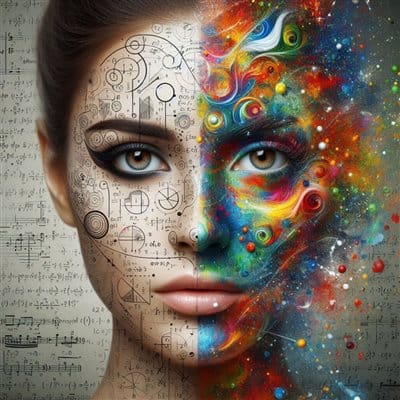The debate over whether graphic design is an art or a science has long been a topic of discussion. For many, design is synonymous with creativity and artistic expression. However, in my view, graphic design should be seen and taught as both a science and an art, giving equal weight to both disciplines.
My Journey into Design
Like many, I was drawn into the world of design because of my natural talent for art. I enjoyed creating visuals that expressed my thoughts and feelings, and I carried this passion with me into my studies. When I pursued a degree in graphic design, the curriculum heavily focused on the artistic side of the field. We were encouraged to think of ourselves as graphic artists and illustrators, letting our imaginations run wild. The emphasis was on creativity, self-expression, and the aesthetic quality of our work.
But something was missing.
While we were honing our artistic skills, we weren’t taught to become skilled communicators. There was little emphasis on understanding how to influence behavior, analyze data, or build deep emotional connections with others through design. In hindsight, I now realize how crucial these elements are to the practice of graphic design.
The Missing Science in Design Education
Throughout my formal education, there was never a mention of behavioral science, human biases, user journeys, or how design functions as a language that communicates and mirrors specific emotions. These concepts were not part of our curriculum, yet they are fundamental to effective design.
Design is much more than just creating visually appealing images. It is a language in itself, a visual medium that communicates feelings and ideas. The choice of colors, shapes, fonts, and layouts can evoke specific emotions and reactions from an audience, making the science of design just as important as the art.
Rebranding Graphic Design as ‘Graphic Emotions’
Reflecting on this gap in education, I believe that graphic design might be better understood if it were rebranded as Graphic Emotions. This term more accurately captures the essence of what graphic design truly is—a tool for expressing and triggering feelings. When designers change how people feel, they connect with their audience on a deeper level. This connection can influence attitudes, shape decisions, and guide behavior. This is, after all, what designers are employed to do.
Design as a Visual Language
Graphic design functions as a visual language where a brand’s look and feel evoke certain archetypal emotions, thoughts, and needs. These elements, when blended together effectively, help tell a brand’s story in a way that resonates with how people feel. We often think of a brand’s story as a sequence of words, but stories can also be told through a sequence of feelings.
Consider how a brand might convey the emotions of courage and innocence through its design. By using specific colors, shapes, and imagery, a designer can evoke these emotions in the audience, telling a story without a single word. When the visual design aligns with the brand’s message, it enhances the overall impact, making the communication more powerful, emotional, and authentic.
The Emotional Disconnect in Modern Branding
Unfortunately, many brands today fail to build this emotional connection with their audience. The visual design often doesn’t match what the brand is trying to communicate, leading to a disconnect. This mismatch can dilute the brand’s message and weaken its impact.
Graphic designers should, therefore, see themselves as experts in the science of emotions. They should be adept at blending the right emotional triggers through a brand’s visual language, much like a sommelier selecting the perfect wine to match a meal. Understanding the science behind how visuals influence emotions is just as important as the creative process of designing them.
Bridging the Gap Between Strategy and Design
This is where a platform like Brand Palette plays a crucial role. By connecting the dots between strategy and design, Brand Palette helps executives, marketers, and designers translate emotions into visuals and visuals into emotions. It aligns teams around a shared language, one that influences behavior and tells a brand’s story more effectively.
In conclusion, graphic design is not just an art, nor is it purely a science. It is a powerful blend of both, requiring a deep understanding of human emotions and behavior alongside creative artistry. By recognizing and embracing this dual nature, we can elevate the field of graphic design to better meet the needs of both brands and their audiences.

